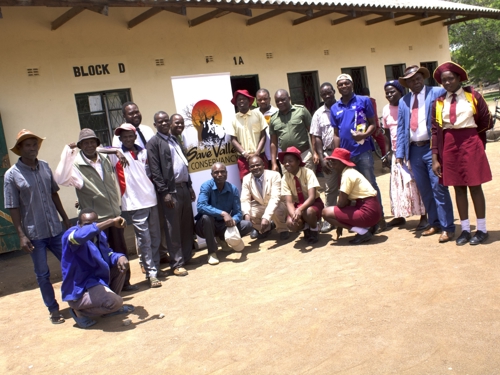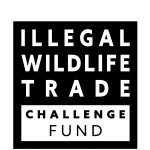Enhancing livelihoods in Zimbabwe

The Community Liaison Manager. Credit - Savé Valley Conservancy.
Life on the conservation frontier: A diary of defending Savé Valley’s wilderness and empowering communities
My name is Dingani Masuku and I am the Community Liaison Manager for Savé Valley Conservancy (SVC).
I was motivated to choose the job for reasons beyond financial factors; it does not pay better than other jobs I’ve had. My last job saw me working across the African continent, hopping on a plane two or three times a month to fly from one country to another. Yet, deep down, something was missing: job satisfaction.
Funded by the IWT Challenge Fund, the Community Liaison Manager job is giving me what no other job has – a purpose in life, and the satisfaction of knowing that I am doing something that saves the lives of both animals and people.
SVC is located in Zimbabwe’s Lowveld, bordered by the Provinces of Masvingo and Manicaland. It is one of the most admired conservancies in the world, and I love it. It is home to Sango, Senuko, Mokore, Savuli, Chishakwe, Msaize, and other properties each with individual owners. A Google click will make you want to take the next plane to this paradise, or leave you dreaming of its abundant wildlife. The ageing trees of Savuli define an ecosystem that, as a jungle, have not been touched by the human hand for a long time. The Mopani trees of Nyangambe, Hammond, and Sanuko will make you want to live there forever. The thorny savannah vegetation of Sango Matendere will leave you wondering why the elephants eat thorns.
All big five are found in this pristine habitat, but just like any other conservancy in Zimbabwe, there is a threat to its flora and fauna.
"Empowering women who have been overlooked for such jobs in Zimbabwe has the potential to transform livelihoods"
Human-wildlife conflict has risen over the years. Just like in any part of the world, this conflict resides where populations rise and people become desperate for, among other things, land, food, jobs, water, and pasture. Natural law demands survival of the fittest which, often, leaves the SVC’s wildlife at the bottom of the pyramid. Illegal wildlife trade thrives in such an environment. Thanks to the IWT Challenge Fund project, the SVC uses a holistic approach, appealing to people in the surrounding communities. There are efforts from different stakeholders to deal with this issue, such as by the Zimbabwe Parks and Wildlife Management Authority – a government department armed with national legislative power. Yet it is not enough, and this is where funding from the IWT Challenge Fund aims to plug the gaps.
While there is no magic pill, this intervention is effective. The project has come up with several approaches to help empower women in the SVC’s surrounding communities through employment provision and accessibility, such as through community ranging opportunities. With the project overseeing the management of fences to stop both domestic and wild animals from crossing each other’s habitats, such activities provide a solution to two overlapping problems.
Community rangers will be stationed across various communities to monitor animals breaching the fence which represents a ‘first-line of defence’ between the conservancy and the communities, ensuring the safety of human lives, livestock, and crops. They will undergo training in handling wildlife issues, ensuring they are properly equipped for the job.

Empowering women who have been overlooked for such jobs in Zimbabwe has the potential to transform livelihoods. In Zimbabwean culture, as in both major languages – Shona and Ndebele – society is littered with idioms about the greatness of women as carers not only within their families but, more broadly, of the environment as well.
As an approach to learning a new job, I believe in total immersion. SVC threw me in at the deep end and I love it. Since taking up the job I have covered a distance of almost 20,000km, traversing through communities around the conservancy to draw attention to the fact that both human and animal lives are at risk. There is wildlife meat in rondavels (circular building with a conical, thatch roof), and some school children mention eating game meat every day. The threat to people and wildlife is real. Poachers are arrested in SVC all the time, and wire snares are removed daily from the animal habitat. Trees are felled to manufacture charcoal, and the forest is dying. Crops, livestock, and livelihoods are threatened by wildlife that exists in a space of unfacilitated coexistence.
The fact that I get to try to do something about it in my job is what makes me value my work so much. It is the job of every human being to try and protect this heritage from ourselves. The IWT Challenge Fund has given me that platform.
Written by Dingani Masuku. For more information on this IWT Challenge Fund Main project IWT100, led by Savé Valley Conservancy, please click here.

 Back
Back